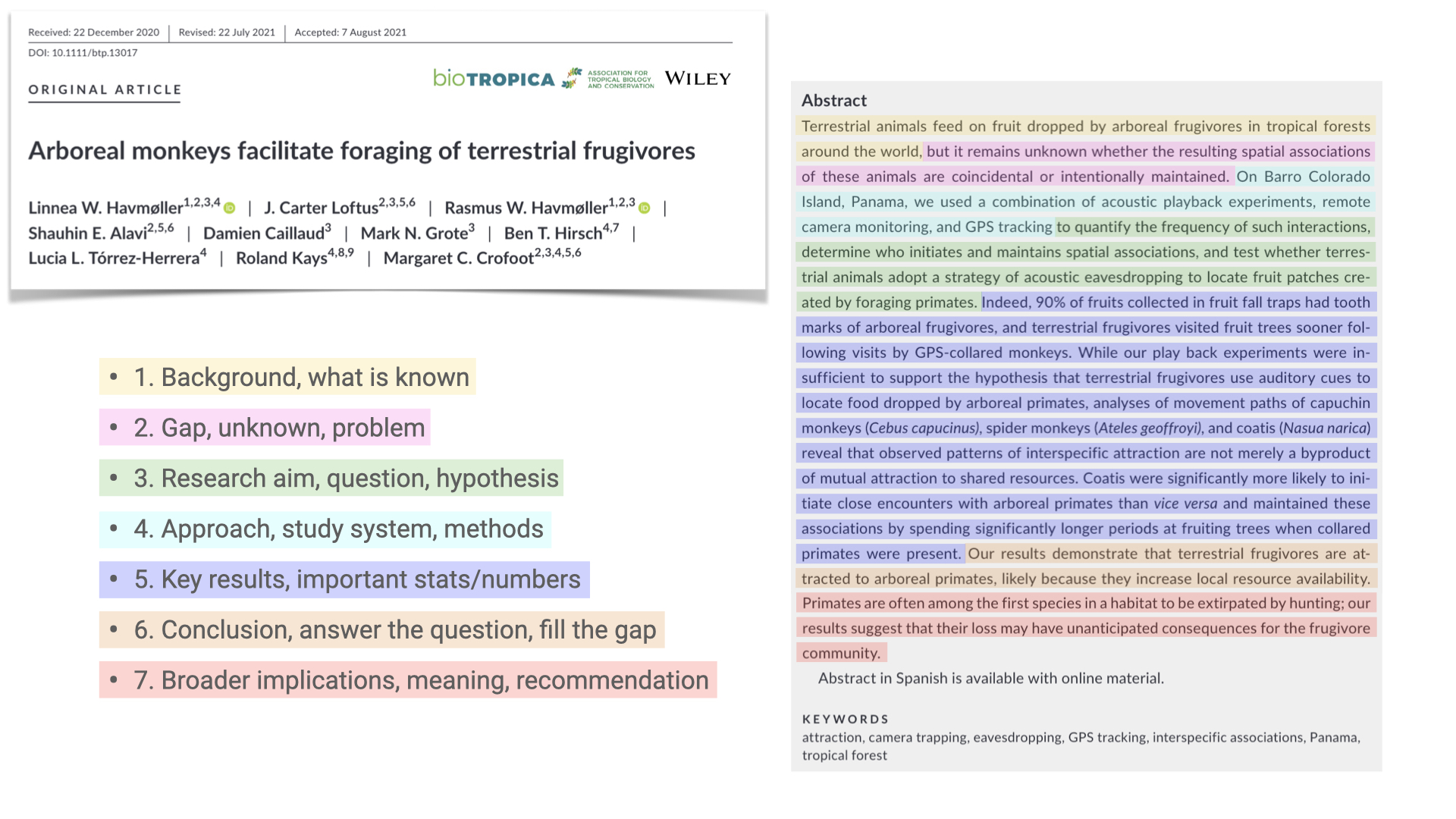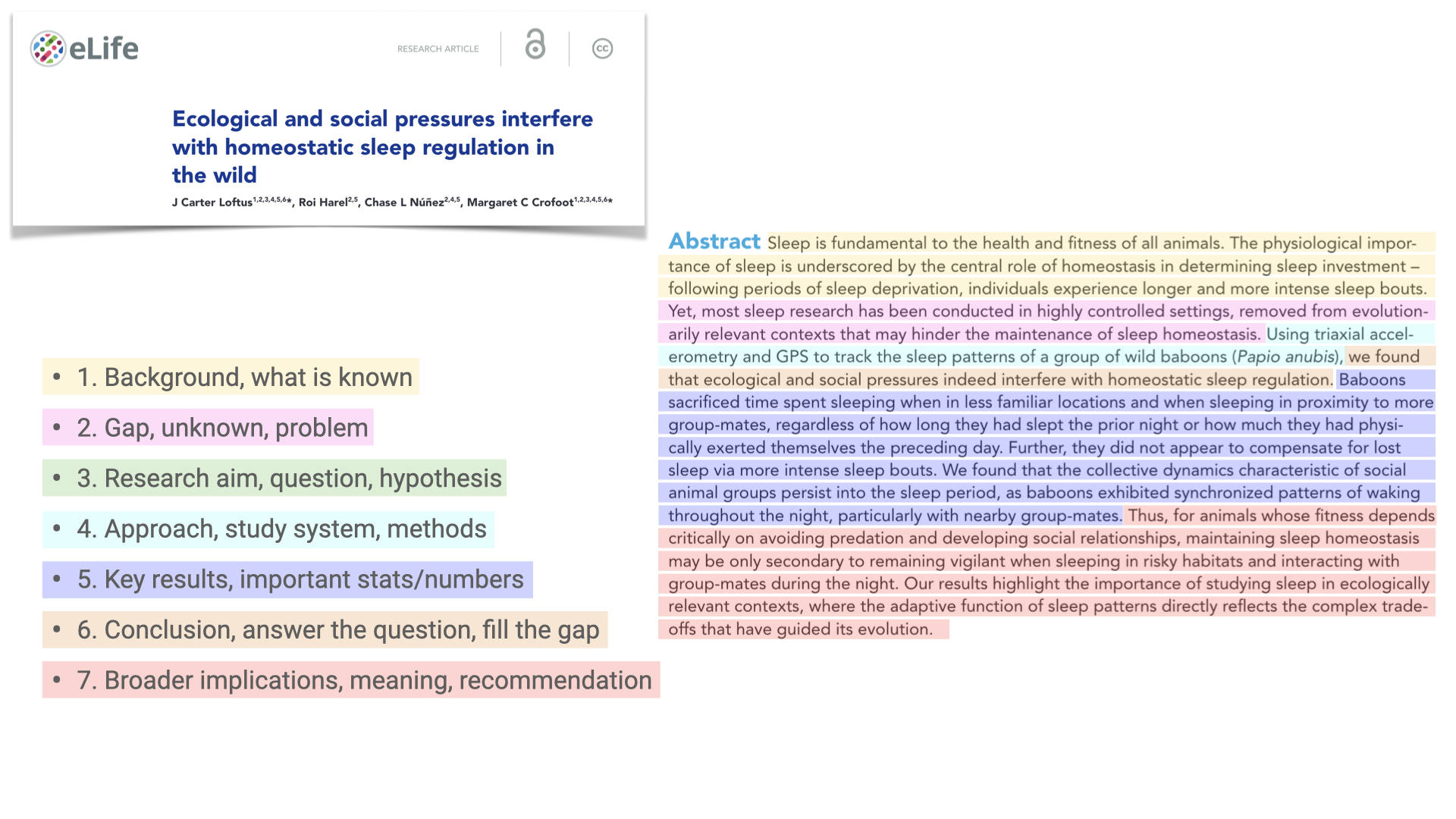All About Abstracts
The following information is meant to assist you when you’re writing an abstract for an original research manuscript (though, some of this information will also apply to review & other types of articles).
Most journals ask for abstracts with a word limit somewhere between 200-300 words, and - unless instructed otherwise - it’s safe to assume that you should follow a pretty standard format, essentially one that condenses the main parts of your paper, from introduction to conclusion.
Remember that, aside from the title, the abstract is the part of your paper that will get read the most, so don’t let it be an afterthought! Put time into crafting an abstract that is clear, concise, interesting, and does justice to your study and full paper.
Overall content of an abstract
Regardless of the type of paper (original research, review, methodological, etc), length, or specific journal requirements for your abstract, essentially all abstracts should contain the 3 Cs: Context, Content, and Conclusion (Mensh & Kording 2017).
Context: Information about the background and/or knowledge gap of this topic. Why should your reader care about your study? Why does your study matter? Why was your study necessary? What knowledge gap did you intend to fill? What research question did you intend to answer?
Content: A brief description of what you did and what you found. How did you approach filling the knowledge gap / answering your research question? What was your study system? What did the data show? What were your major results?
Conclusion: A summary of the interpretation of your results and their importance. How does this fill the knowledge gap / answer your original question? Why do your results matter? What does your study contribute to this body of knowledge?
For abstracts that must be less than ~150 words, you may need to get creative to fit in all of this information. For abstracts of original research papers, I recommend starting with the general recipe below…
Abstract recipe
The following recipe is meant to provide a very basic overview of the standard structure for a 200-300 word abstract for an original research paper. It is meant to be a guide, not a rigid rule list!
- Background, what is known (~1 sentence)
- Gap, unknown, problem (~1 sentence)
- Research aim, question, hypothesis (~1 sentence)
- Approach, study system, methods (~1-2 sentences)
- Key results, important stats/numbers (~1-3 sentences)
- Conclusion, answer the question, fill the gap (~1 sentence)
- Broader implications, meaning, recommendation (~1 sentence)
It is not uncommon for the order of #3 and #4 to be switched (approach and then research aim), nor for the order of #5 and #6 to be switched (overarching conclusion and then specific results). Furthermore, especially where there is a very small word limit, it may be possible to omit #2 (the knowledge gap), as it is implied by #1 (background) and/or #3 (research aims), and/or to collapse #3 (research aims) and #4 (approach) into a single statement.
It is always important to check and see if the journal has any specific requirements for abstracts. For example, Nature asks for a “summary paragraph” rather an an “abstract” per se.
If you are at all unsure of how to construct an abstract, and if the journal does not give any specifics of how they want it (beyond a simple word limit), following the above recipe is generally a good place to start.
When to write your abstract
Although everybody’s process is different, it can be a very valuable exercise to write a paper’s abstract first, before writing any of the rest of the paper. If you can fill in all of the ingredients for the recipe above, then you are ready to write your paper. You can then use your abstract as a road map to guide your paper-writing. As you write your paper, and your thinking develops, continue to check back to the abstract and edit/adjust your abstract, or your paper, as necessary. Damien Farine has a great blog post over on academic life histories about how to use your abstract to improve your paper-writing.
If you are struggling to satisfy any of the parts of the recipe, then you may need to do more background research, discussing with co-authors, or analysis before you are ready to write your paper.
Whatever your process, I encourage you to not leave the abstract until the end, just prior to submission. Remember that it is one of the absolute most important parts of the entire paper, and it should receive the same - if not more - scrutiny (by yourself, co-authors, and others who help to edit your work) as the rest of the paper!



